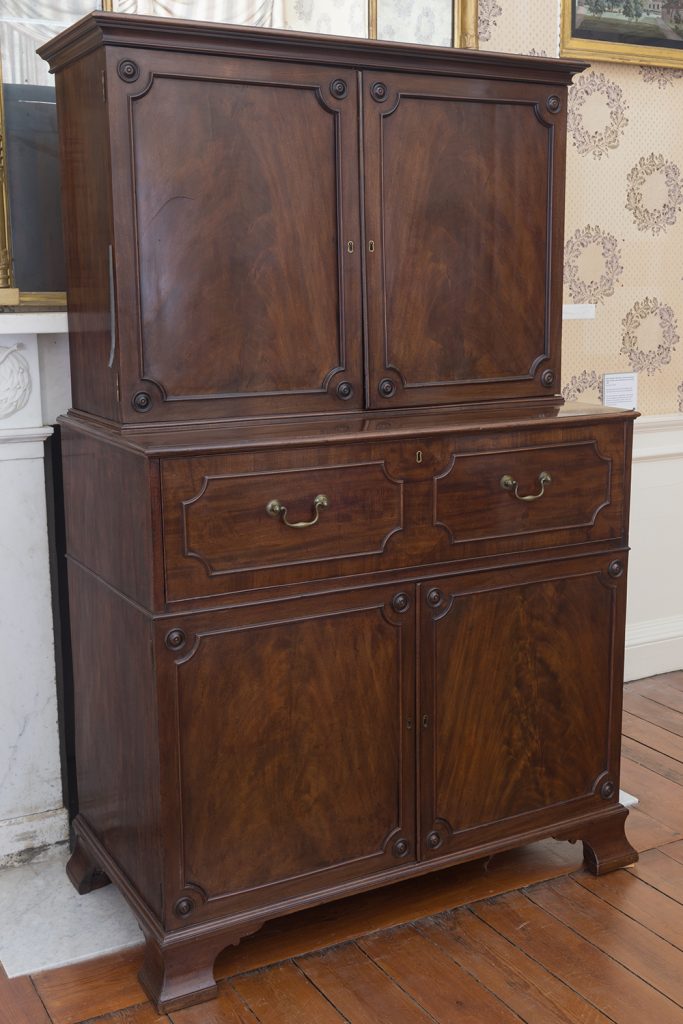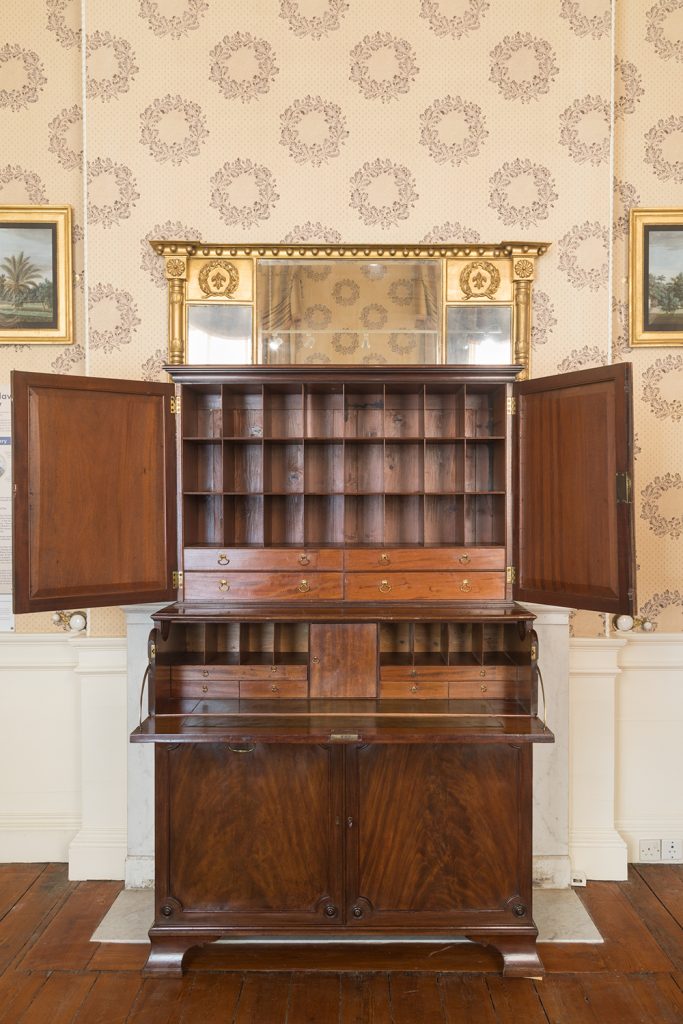Chippendale secretaire at Paxton House
Paxton House is a Grade A-listed, Adam-designed country house in the Scottish borders which holds an internationally significant collection of furniture by Thomas Chippendale the Elder and Younger, commissioned for the house between 1774 and 1814.
In 2021 the Beecroft Bequest supported the acquisition of a unique Chippendale secretaire – a large writing desk, fitted with drawers and topped off by a filing cabinet. The secretaire had been originally made for Paxton House, commissioned by businessman and enslaver Ninian Home (1732-95) and his wife Penelope.
The secretaire’s neo-classical design and outstanding cabinetry makes the piece a rare survival and easily met the Bequest’s criteria of ‘aesthetic merit’ and relevance to Paxton House’s collecting policy. The grant helped enable the secretaire to return to the house it was designed for.

The secretaire is made from the highest quality ‘flame’ mahogany, cut down with great difficulty by enslaved people during early deforestation in the Caribbean. Paxton’s former owner Ninian Home was a plantation and slave owner/trader who became Lieutenant-Governor of Grenada in 1792 until he was killed in an uprising. His brother George inherited Paxton and the Waltham plantation in Grenada, with later owners benefitting from the British Government’s Slave Compensation Commission.
The team at Paxton House were aware that the house’s slavery history needed to be addressed comprehensively. Prior to 2022 there had never been a permanent space dedicated to this history for visitors. For the Beecroft Bequest trustees, the grant award for the Chippendale secretaire was made not only because of its craftsmanship and historical importance but because Paxton House had committed to a wider programme of work on the house’s connections with the Caribbean, Africa, slavery and mahogany.
Paxton’s project ‘Parallel lives, worlds apart: exploring historical slavery related collections at Paxton House and connecting 21st century lives and African, Caribbean and other minority diaspora communities’ brings Paxton’s outstanding archives, costume, paintings, Recognised furniture collections and the strong historical links with slavery in the Caribbean, particularly Grenada, to existing and new audiences.

Paxton House curator Fiona Salvesen Murrell said: “Working with our partners – Descendants – we developed a two-year costume exhibition which links with slavery connections, a permanent exhibition on ‘Caribbean Connections, Paxton and Slavery’, and an in house and online ‘Sugar and Slavery’ Trail. We are making the scanned archives available online with blogs on recent research. The Paxton Trust has been very grateful for the support of the Esmée Fairbairn Collections Fund, Museums Galleries Scotland, and The Textile Society for enabling us to embed these histories deep within the house interpretation and grow our community partnerships, both local and further afield.
“The secretaire is a focal point in the new permanent exhibition, displayed alongside a newly commissioned model of Waltham plantation, West African textiles and two mannequins representing a West African King and Queen. Seated at the secretaire on a Chippendale chair is a mannequin in commissioned replica clothing representing Ninian Home. He holds replica 18th century inventories of the enslaved people on his Grenadian estate.
“This is a really important project for us and for the communities we are partnering with as we all want to make the collections and common histories accessible to everyone, there is much we can learn from and share today. Caribbean communities have been only too well aware of the links between slavery and the histories of many old estates; but this has not been common knowledge for indigenous people in the UK; our project is making these links clear.”
Images copyright the Paxton Trust, with photography by Nick Haynes